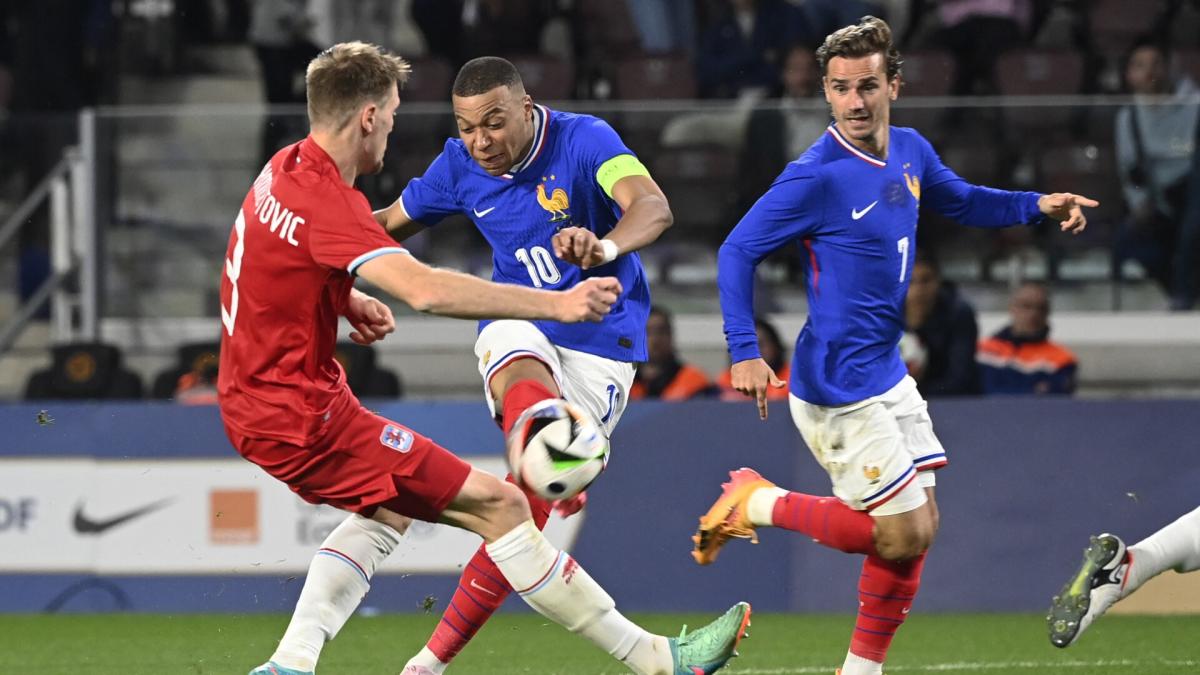Historical Context and Background

France vs austria – The rivalry between France and Austria has a long and complex history, dating back to the Middle Ages. Over the centuries, the two nations have fought numerous wars over territory, power, and ideology.
The clash between France and Austria, two European powerhouses, has shaped the course of history. Their rivalry extended beyond borders, spilling onto battlefields and diplomatic arenas. From the War of the Spanish Succession to the Napoleonic Wars, the conflict between these nations left an enduring legacy.
The france vs austria dynamic remains a fascinating study in international relations, highlighting the complexities of power struggles and the consequences of territorial ambitions.
One of the key factors that contributed to the tension between France and Austria was the Habsburg dynasty, which ruled Austria for centuries. The Habsburgs were a powerful and ambitious family, and they often sought to expand their territory at the expense of France. This led to a number of wars between the two nations, including the Thirty Years’ War (1618-1648) and the War of the Spanish Succession (1701-1714).
The rivalry between France and Austria, once fierce and bloody, has faded into a distant memory, like the echoes of a sleepless night in Seattle. Sleepless in Seattle , a tale of love and longing, reminds us that even in the midst of conflict, human connection can prevail.
And so, as the sun sets on this ancient rivalry, let us remember that the bonds we forge with each other are stronger than any battlefield.
Another factor that contributed to the rivalry between France and Austria was the French Revolution. The Revolutionaries overthrew the French monarchy and established a republic. This frightened the Habsburgs, who feared that the Revolution would spread to their own country. As a result, Austria joined a coalition of other European powers to fight against France.
The clash between France and Austria raged on, each side desperate to gain an advantage. Amidst the chaos, an old French coin emerged as a symbol of a bygone era. Its intricate design and worn edges hinted at a time when these two nations stood side by side, their fates intertwined.
The Napoleonic Wars (1803-1815) were a watershed moment in the rivalry between France and Austria. Napoleon Bonaparte, a brilliant military leader, led France to victory over Austria in a series of battles. This led to the collapse of the Holy Roman Empire and the creation of the French Empire.
The rivalry between France and Austria has been a defining force in European history, shaping alliances, wars, and the course of nations. From the days of the Habsburg Empire to the Napoleonic Wars, these two nations have clashed on battlefields and in diplomatic halls.
But amidst the grandeur of history, there are also the smaller stories, the everyday lives of ordinary people caught in the crossfire. Some in France tells the tale of such a life, a woman who finds herself caught between the competing claims of her homeland and her adopted country.
Her story is a reminder that even in the midst of great conflicts, the human spirit endures.
After Napoleon’s defeat at Waterloo in 1815, the rivalry between France and Austria continued. The two nations fought on opposite sides in the Crimean War (1853-1856) and the Franco-Prussian War (1870-1871). In the 20th century, the two nations were on opposite sides of World War I and World War II.
The rivalry between France and Austria has been a defining feature of European history for centuries. From the battles of the Napoleonic Wars to the diplomatic clashes of the 20th century, these two nations have often found themselves at odds.
In recent years, the focus of their competition has shifted to the realm of culture, with each country vying for supremacy in fields such as art, music, and literature. As part of this rivalry, France has been the subject of numerous crosswords, including one that can be found at some in france crossword.
This particular puzzle features clues related to French history, geography, and culture, providing a fun and challenging way to learn more about this fascinating country.
Political Factors, France vs austria
The political factors that contributed to the rivalry between France and Austria included:
- The Habsburg dynasty’s desire to expand its territory at the expense of France.
- The French Revolutionaries’ fear that the Revolution would spread to Austria.
- Napoleon Bonaparte’s ambition to create a French Empire.
Economic Factors
The economic factors that contributed to the rivalry between France and Austria included:
- The competition between the two nations for control of trade routes.
- The French Revolutionaries’ desire to redistribute wealth.
- Napoleon Bonaparte’s need for resources to support his wars.
Social Factors
The social factors that contributed to the rivalry between France and Austria included:
- The different cultures and languages of the two nations.
- The religious differences between the two nations.
- The French Revolutionaries’ desire to create a new society based on equality and fraternity.
Military Engagements and Wars

The military conflicts between France and Austria spanned centuries, shaping the political landscape of Europe. These engagements showcased the evolving strategies and tactics employed by both sides.
The table below provides an overview of the major battles and wars between France and Austria:
| Conflict | Dates | Outcome |
|---|---|---|
| Thirty Years’ War | 1618-1648 | French victory |
| War of the Spanish Succession | 1701-1714 | Austrian victory |
| War of the Austrian Succession | 1740-1748 | Austrian victory |
| Seven Years’ War | 1756-1763 | French defeat |
| French Revolutionary Wars | 1792-1799 | French victory |
| Napoleonic Wars | 1803-1815 | French victory |
| Franco-Prussian War | 1870-1871 | Prussian victory |
| World War I | 1914-1918 | Allied victory |
| World War II | 1939-1945 | Allied victory |
Strategies and Tactics
France and Austria employed diverse strategies and tactics in their military engagements:
- France: Known for its offensive approach, France often used rapid maneuvers and artillery barrages to overwhelm its opponents. The French army emphasized discipline and centralized command.
- Austria: Austria relied on a more defensive strategy, utilizing fortifications and terrain to their advantage. The Austrian army was known for its well-trained infantry and cavalry.
As military technology advanced, both sides adapted their tactics. During the Napoleonic Wars, France introduced new artillery techniques and the concept of mass conscription. Austria, in turn, developed innovative defense strategies, such as the use of field fortifications and mobile reserves.
Cultural and Artistic Exchange: France Vs Austria
The rivalry between France and Austria had a profound impact on cultural and artistic developments in both countries. The competition between the two nations fueled a desire to outdo each other in every sphere, including the arts.
One of the most visible examples of this rivalry can be seen in the architecture of the two countries. The French Baroque style, characterized by its grandeur and opulence, was developed in response to the more restrained Austrian Baroque style. The Palace of Versailles, built by Louis XIV, is a prime example of the French Baroque style, while the Schönbrunn Palace in Vienna is a masterpiece of the Austrian Baroque style.
Literary Movements
The rivalry between France and Austria also influenced literary movements in both countries. The French Enlightenment, a period of intellectual and philosophical ferment, was partly a response to the perceived cultural and political dominance of Austria. Voltaire, one of the leading figures of the Enlightenment, was a vocal critic of the Austrian monarchy.
In Austria, the Romantic movement emerged as a reaction to the Enlightenment’s emphasis on reason and logic. Romantic writers such as Franz Grillparzer and Adalbert Stifter celebrated the power of emotion and imagination.
Artistic Works
The rivalry between France and Austria also produced some of the greatest works of art in history. The French painter Jacques-Louis David was known for his neoclassical paintings that glorified the French Revolution. The Austrian painter Gustav Klimt was a pioneer of the Art Nouveau movement.
The rivalry between France and Austria was a complex and multifaceted phenomenon that had a profound impact on the cultural and artistic development of both countries. The competition between the two nations fueled a desire to outdo each other in every sphere, including the arts, and the result was a rich and vibrant cultural legacy that continues to inspire and amaze today.
